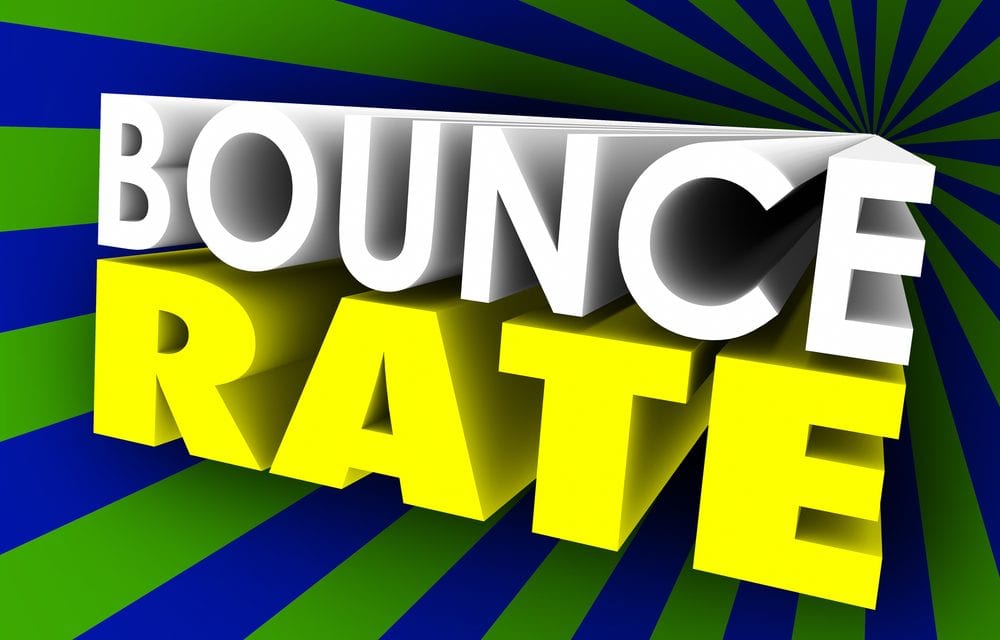The goal of any website or landing page is to intrigue your lead and give them the information they need to make a decision and take action. Ideally, your prospects won’t “bounce” — meaning they arrive at your website, and don’t visit any other pages before clicking away. This can sometimes occur because they got
#1. Site Speed
This is probably one of the biggest factors in overly high bounce rates. Google’s
#2. Overwhelming Number of Options
Too much information might not seem like a big problem, but it can quickly overwhelm site visitors. A large number of menus, page elements, and dropdowns can cause visitors to spend too much time looking for relevant information to meet their needs. Many will give up altogether and leave the site. If you don’t identify any technical or other obvious reasons for a high bounce rate, reevaluating site design might help—a clean and simple design usually works best.
#3. Visually Unappealing
While a site or landing page that’s visually unappealing may not be the primary reason users bounce off a page, it is a factor. Everything affects that important first impression, including the colors, photos, font, and text. Of course, you should always proofread website and landing pages carefully before they are launched, and get a variety of opinions if you can about the design choices. Ask your critics to be brutally honest, and if the evidence shows that your site is visually unappealing, it’s time to reassess.
#4. Targeting the Wrong Audience
If your overall strategic goal is just to get the most clicks from
Having a lower number of clicks but a higher conversion rate is better than a lot of clicks, but a high bounce rate and few conversions. You may have to dig deep to discover if your bounce rate is a targeting issue, but it’s important to zero in on the cause.
#5. Pop-Ups
Pop-up boxes can help you get sign-ups for your email list or advertise specials. Depending on your business model, outside advertising could be a viable source of revenue. However, most users have very little patience with pop-ups, and will only take so many interruptions before they become frustrated.
Giving your users what they came for is very important—pop-ups that distract from the reason leads came to your site in the first place could cost you a conversion. Any pop-ups that do get displayed should be relevant to the user and be helpful instead of annoying.
#6. Requesting Too Much Information
Landing pages are a great way to gain valuable information about your leads. They often serve as a “gate” for premium content or another offer, like a consultation, and require visitors to submit information about themselves. This information can be as simple as a name and email address, or an extensive form with many different questions.
However, there’s a fine line between exchanging information and being intrusive or demanding. The length of the form should depend on the amount of trust you’ve built with the lead, and if you ask for too much too soon, you may experience higher bounce rates. If that’s the case, reevaluate your landing page. Are you asking too much of your leads for the content you’re offering? Could you ask fewer questions?
#7. Poor Usability on Mobile
We live in a mobile world now, and if your site doesn’t function properly or look good on a variety of mobile devices, you could be missing out on a lot of opportunity. In 2015, StatCounter reported that 37% of website visits were on mobile. With that number increasing each year, mobile support (or lack thereof) can definitely affect bounce rates.
#8. Page Error
When you encounter a 404 on a website page, there’s no reason to continue. It’s not a common cause of high bounce rates, but it’s definitely something you can check—especially if the bounce rate is over 75%. A broken website definitely doesn’t give users a positive first impression, so ensure that everything is kept up to date and in working order.
Step Back and Breathe
Be patient when looking through your analytics for clues. It can take some time to discover the source of your high bounce rate. Before you get too upset about your bounce rates, take a step back. It’s important to remember that high bounce rates are relative (and a very low bounce rate can mean the site isn’t functioning properly).
Your site might be converting clients and in the end, the bounce rate isn’t that important. Even if it does indicate that you need to make some changes, you’ll gain some extremely useful insight in the process, which will help you make your site and landing pages better in the future.


